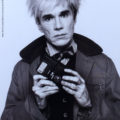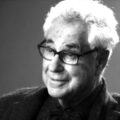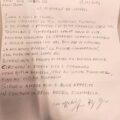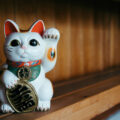“Feet, why do I want them if I have wings to fly?”
What a better day than February the 14th to bring Love to Padua with the lively colours of Mexico. Frida Kahlo and Diego Rivera, united in life and in art, bring their passion to the halls of the Altinate San Gaetano Cultural Center through Mexican portraits and costumes. This is the only Italian stop of a traveling exhibition that has already made vibrating the hearts of London, New York and Melbourne among others.
Most of the works come from the collection of Jacques and Natasha Gelman, friends of the two artists: he is a successful director and refined collector, she continues to enrich the collection even after his death. In addition to the paintings, there are also photographs and a section reserved for Mexican costumes.
An iconic Mexico of the mid-1900s that the works of Frida Kahlo and the murals and oil on canvas by Diego Rivera translate into art between passion, beauty, strength and suffering. Theirs was in fact a love… troubled!
Magdalena Carmen Frida Kahlo y Calderón was born on July the 6th, 1907 in Coyoacánm Mexico. She is the daughter of Wilhelm Kahlo, a simple man, nice, Jewish, lover of literature and music, painter who emigrated to Mexico from Hungary. After a first marriage, from which he remains a widower, in 1898 he marries Matilde Calderon y Gonzales, daughter of a Mexican and an Indian, with whom they have four children. Frieda is the liveliest and most rebellious daughter.
The father, after various “food” jobs, becomes a talented photographer and it is probably he who inspires his daughter who has shown artistic talent and an independent and passionate spirit since her adolescence. The theme of the self-portrait will arise from this context. The first he paints is for his teenage love, Alejandro.
In her portraits Frida mainly depicts the most difficult moments of her life, such as the serious accident she fell victim to in 1925 while traveling on a bus. The consequences of the accident will affect her health for life, but will not weaken her moral temper: despite the pain, in fact, she is always passionately dedicated to painting and continues to be the same rebellious, nonconformist and lively girl as before.
Back home from the hospital she is bedridden for several months and for this reason her first subject is her foot which she glimpses between the sheets. To support her, she is given a four-poster bed with a mirror on the ceiling: this is where the series of self-portraits begins.
Frida brings her paintings to Diego Rivera, a famous mural painter of the time, to have his critique. Rivera is a tall, fat, imposing man who goes around in old trousers, a dull shirt, an old hat. Brilliant, cheerful, impetuous and known for being a great tombeur de femmes, he was positively impressed by the artist, so much so that he took her under his wing, introducing her to the Mexican political-cultural scene. Frida becomes a Communist Party activist and falls in love with her mentor.
In 1929 Frida Kahlo and Diego Rivera got married. For him it is the third marriage; she knows very well that he will cheat on her and she will repay him in the same coin, with both men and women.
After a brief interlude in New York, the couple returns to Mexico where they decide to live in two houses connected by a bridge, in order to each have their own spaces. They divorced in 1939 due to Rivera’s betrayal with Frida’s sister, and then remarried in 1940 in San Francisco.
Frida at this point begins to have an intentionally naive lifestyle which leads her to paint small self-portraits inspired by popular art and pre-Columbian folklore, affirming her Mexican identity.
The life and works of Frida Kahlo have always fascinated the whole world both artistically and emotionally, leading her to have great success already in her lifetime and proclaiming her among the bravest and greatest painters of the twentieth century.
It is an honour for Padua to be able to boast the stage of this great traveling exhibition just a few minutes from the AbanoRitz.











